Discover Growing the Valley
Growing the Valley

Growing the Valley
Author: University of California, Agriculture and Natural Resources
Subscribed: 27Played: 1,486Subscribe
Share
© Copyright (c) 2018 The Regents of the University of California. All Rights Reserved
Description
This is a podcast that goes over new research and basic information about growing orchard crops in the Central Valley of California
298 Episodes
Reverse
Self-fertile Nonpareil has the potential to be a gamechanger for California almond growers. Both Sierra Gold Nursery (FruitionOne™) and Burchell Nursery (Nonpareil SC+) announced in late 2024 their partnerships with biotech companies to develop a self-fertile Nonpareil. Both nurseries plan to begin delivering these trees to growers in 2027. However, many questions remain. In this episode Reid Robinson CEO of Sierra Gold Nursery discusses the development and future for FruitionOne™. You can learn more at: ohalo.com/fruitionone and contact Sierra Gold at: sierragoldtrees.com/contact This episode does not constitute an endorsement, merely the sharing of an industry advancement that will be the subject of independent evaluation by the University of California Cooperative Extension in the years to come. The views, thoughts, and opinions expressed are the speaker’s own and do not represent the views, thoughts, and opinions of the University of California. The material and information presented here is for general information purposes only. The "University of California" name and all forms and abbreviations are the property of its owner and its use does not imply endorsement of or opposition to any specific organization, product, or service.Follow us on Twitter! @SacOrchards and @SJVtandvThank you to the Almond, Pistachio, Prune, and Walnut Boards of California for their kind donations. Thank you to Muriel Gordon for the music.
Self-fertile Nonpareil has the potential to be a gamechanger for California almond growers. Both Sierra Gold Nursery (FruitionOne™) and Burchell Nursery (Nonpareil SC+) announced in late 2024 their partnerships with biotech companies to develop a self-fertile Nonpareil. Both nurseries plan to begin delivering these trees to growers in 2027. However, many questions remain. In this episode Tom Burchell owner of Burchell Nursery discusses the development and future for Nonpareil SC+. You can learn more at: burchellbreeding.comThis episode does not constitute an endorsement, merely the sharing of an industry advancement that will be the subject of independent evaluation by the University of California Cooperative Extension in the years to come.The views, thoughts, and opinions expressed are the speaker’s own and do not represent the views, thoughts, and opinions of the University of California. The material and information presented here is for general information purposes only. The "University of California" name and all forms and abbreviations are the property of its owner and its use does not imply endorsement of or opposition to any specific organization, product, or service.Follow us on Twitter! @SacOrchards and @SJVtandvThank you to the Almond, Pistachio, Prune, and Walnut Boards of California for their kind donations. Thank you to Muriel Gordon for the music.
Dr. Themis Michailides (UC Davis Plant Pathologist at the Kearney Ag Center) provides a critical update on his lab’s research on the biology and management of walnut mold. An article that is episode was based can be found at: sacvalleyorchards.com Mention of a pesticide does not constitute a pesticide recommendation. Always follow the pesticide label. Find out more at ipm.ucanr.edu The views, thoughts, and opinions expressed are the speaker’s own and do not represent the views, thoughts, and opinions of the University of California. The material and information presented here is for general information purposes only. The "University of California" name and all forms and abbreviations are the property of its owner, and its use does not imply endorsement of or opposition to any specific organization, product, or service.Follow us on Twitter! @SacOrchards and @SJVtandvThank you to the Almond, Pistachio, Prune, and Walnut Boards of California for their kind donations. Thank you to Muriel Gordon for the music.
Facing tightening SGMA regulations and the specter of future droughts, how should we be designing the almond orchard of the future? On the podcast, Franz Niederholzer discusses his idea of a test almond orchard at the Nickels Soil Lab with different rootstocks provided reduced irrigation treatments from planting onward. Should a grower provide full irrigation to fewer acres, or reduced irrigation to their existing farming footprint?Come to an upcoming extension meeting!2025 International School on Microirrigation for Crop Production: Class Lectures at UC Davis October 13-15, and field trips October 16-17. The views, thoughts, and opinions expressed are the speaker’s own and do not represent the views, thoughts, and opinions of the University of California. The material and information presented here is for general information purposes only. The "University of California" name and all forms and abbreviations are the property of its owner and its use does not imply endorsement of or opposition to any specific organization, product, or service.Follow us on Twitter! @SacOrchards and @SJVtandvThank you to the Almond, Pistachio, Prune, and Walnut Boards of California for their kind donations. Thank you to Muriel Gordon for the music.
Researchers have been conducting almond irrigation and other studies at the Nickels Soil Lab in Arbuckle, CA for over 50 years! On the podcast, Franz Niederholzer revisited research on early microirrigation, the consequences of late season drought in young almonds, and the implications of one-year of season-long drought in mature almonds. Dialing in irrigation is the greatest task for California orchardists, and we should continue to learn from the lessons of our predecessors. Come to an upcoming extension meeting!2025 International School on Microirrigation for Crop Production: Class Lectures at UC Davis October 13-15, and field trips October 16-17. The views, thoughts, and opinions expressed are the speaker’s own and do not represent the views, thoughts, and opinions of the University of California. The material and information presented here is for general information purposes only. The "University of California" name and all forms and abbreviations are the property of its owner and its use does not imply endorsement of or opposition to any specific organization, product, or service.Follow us on Twitter! @SacOrchards and @SJVtandvThank you to the Almond, Pistachio, Prune, and Walnut Boards of California for their kind donations. Thank you to Muriel Gordon for the music.
Environmental bud failure showed up in almonds in a big way in 2025. From a subtle delay of leafing in parts of Nonpareil canopies throughout the Central Valley to some orchards in the northern Sacramento Valley with only half leaf out. This disorder also called leafing failure, severely affected many growers in the northern Sacramento Valley. Dr. Tom Gradziel (UC Davis) gets into the complexities of this disorder, as well as discussing the unusual bloom in 2025. Come to an upcoming extension meeting!2025 International School on Microirrigation for Crop Production: Class Lectures at UC Davis October 13-15, and field trips October 16-17. The views, thoughts, and opinions expressed are the speaker’s own and do not represent the views, thoughts, and opinions of the University of California. The material and information presented here is for general information purposes only. The "University of California" name and all forms and abbreviations are the property of its owner and its use does not imply endorsement of or opposition to any specific organization, product, or service.Follow us on Twitter! @SacOrchards and @SJVtandvThank you to the Almond, Pistachio, Prune, and Walnut Boards of California for their kind donations. Thank you to Muriel Gordon for the music.
If you work in the almond industry, you likely know non-infectious bud failure (NBF) is bad news. However, do you understand why NBF happens, and that we’re likely to see it on future almond varieties, not just on Carmel? Tom Gradziel discusses the science behind NBF and the work UC researchers together with nurseries have done to make massive gains in addressing the problem. You can lead more about managing NBF at: sacvalleyorchards.com/almonds/horticulture/non-infectious-bud-failure-management Come to an upcoming extension meeting!2025 International School on Microirrigation for Crop Production: Class Lectures at UC Davis October 13-15, and field trips October 16-17. The views, thoughts, and opinions expressed are the speaker’s own and do not represent the views, thoughts, and opinions of the University of California. The material and information presented here is for general information purposes only. The "University of California" name and all forms and abbreviations are the property of its owner and its use does not imply endorsement of or opposition to any specific organization, product, or service.Follow us on Twitter! @SacOrchards and @SJVtandvThank you to the Almond, Pistachio, Prune, and Walnut Boards of California for their kind donations. Thank you to Muriel Gordon for the music.
Regenerative agriculture is currently all the rage these days in some circles. With a broad range of practices that can be classified as regenerative, it still can feel like a mushy term that means different things to different people (which is actually by design). Amelie Gaudin sits down with Phoebe Gordon to discuss what qualifies as a regenerative practice, how the focus differs from “conventional” agriculture, and the science behind it (spoiler alert: you’re probably already familiar with a lot of it!). Come to an upcoming extension meeting!And finally, the 2025 International School on Microirrigation for Crop Production: Class Lectures at UC Davis October 13-15, and field trips October 16-17. The views, thoughts, and opinions expressed are the speaker’s own and do not represent the views, thoughts, and opinions of the University of California. The material and information presented here is for general information purposes only. The "University of California" name and all forms and abbreviations are the property of its owner and its use does not imply endorsement of or opposition to any specific organization, product, or service.Follow us on Twitter! @SacOrchards and @SJVtandvThank you to the Almond, Pistachio, Prune, and Walnut Boards of California for their kind donations. Thank you to Muriel Gordon for the music.
Walnut scale is a minute insect pest that can, if populations build high enough and kill fruiting wood. It can do this by directly allowing pathogens entry into walnut wood, or by weaking branches, making them more vulnerable to infection. In this episode In this episode, Elizabeth Fichtner discusses the lifecycle of the pest and control options. Note: while walnut scale does appear in almonds, this episode only covers walnuts.Mention of a pesticide does not constitute a pesticide recommendation, merely the sharing of research results. Consult your PCA and read the pesticide label. The label is law. The miroirrigation school will be held from October 13-17, find more here.The views, thoughts, and opinions expressed are the speaker’s own and do not represent the views, thoughts, and opinions of the University of California. The material and information presented here is for general information purposes only. The "University of California" name and all forms and abbreviations are the property of its owner and its use does not imply endorsement of or opposition to any specific organization, product, or service.Follow us on Twitter! @SacOrchards and @SJVtandvThank you to the Almond, Pistachio, Prune, and Walnut Boards of California for their kind donations. Thank you to Muriel Gordon for the music.
A great deal goes into a successful prune crop. In part two or a two-part podcast on prune crop phenology we complete the yearly cycle by talking about summer fruit growth, key financial considerations at harvest, and finishing the season strong in the postharvest period. Luke Milliron assembled an expert panel of UCCE Farm Advisors, Franz Niederholzer (UCCE Colusa), Jaime Ott (UCCE Tehama), and Becky Wheeler-Dykes to talk about each step in prune fruit development from buds to harvest and back-again. If you missed part one, that’s where we discussed the crop phenology and key management steps from fruit bud development through to fruit thinning. Topics included weather at bloom, the importance of weather the 30 days after bloom, a fruit thinning calculator, and we finished by discussing the exciting new Green Atlas Cartographer ATV that can bring precision agriculture to prune production by mapping fruit load in each tree ahead of shaker thinning in spring. Come to an upcoming extension meeting!In the San Joaquin Valley: Tuesday August 19: Stone Fruit Roundtable in Dinuba. And finally, the 2025 International School on Microirrigation for Crop Production: Class Lectures at UC Davis October 13-15, and field trips October 16-17. The views, thoughts, and opinions expressed are the speaker’s own and do not represent the views, thoughts, and opinions of the University of California. The material and information presented here is for general information purposes only. The "University of California" name and all forms and abbreviations are the property of its owner and its use does not imply endorsement of or opposition to any specific organization, product, or service.Follow us on Twitter! @SacOrchards and @SJVtandvThank you to the Almond, Pistachio, Prune, and Walnut Boards of California for their kind donations. Thank you to Muriel Gordon for the music.
A great deal goes into a successful prune crop. In part one of a two-part panel, Franz Niederholzer (UCCE Colusa), Jaime Ott (UCCE Tehama), Becky Wheeler-Dykes (UCCE Glenn) and host Luke Milliron (UCCE Butte) talk about the formation of fruit buds all the way through to fruit thinning in spring. Topics include weather at bloom, the importance of weather the 30 days after bloom, and a calculator that helps prune growers shaker thin fruit in order to produce a quality crop. We finish the first part of the yearly prune cycle by discus A great deal going into a successful prune crop. In part one of a two-part panel, Franz Niederholzer (UCCE Colusa), Jaime Ott (UCCE Tehama), Becky Wheeler-Dykes (UCCE Glenn) and host Luke Milliron (UCCE Butte) talk about the formation of fruit buds all the way through to fruit thinning in spring. Topics include weather at bloom, the importance of weather the 30 days after bloom, and a calculator that helps prune growers shaker thin fruit in order to produce a quality crop. We finish the first part of the yearly prune cycle by discussing the exciting new Green Atlas Cartographer ATV that can bring precision agriculture to prune production by mapping fruit load in each tree ahead of shaker thinning in spring. In part two we will complete the yearly cycle by talking about summer fruit development, key financial considerations at harvest, and promoting an excellent return bloom in 2026. Come to an upcoming extension meeting!In the San Joaquin Valley: Tuesday August 19: Stone Fruit Roundtable in Dinuba. And finally, the 2025 International School on Microirrigation for Crop Production: Class Lectures at UC Davis October 13-15, and field trips October 16-17. The views, thoughts, and opinions expressed are the speaker’s own and do not represent the views, thoughts, and opinions of the University of California. The material and information presented here is for general information purposes only. The "University of California" name and all forms and abbreviations are the property of its owner and its use does not imply endorsement of or opposition to any specific organization, product, or service.Follow us on Twitter! @SacOrchards and @SJVtandvThank you to the Almond, Pistachio, Prune, and Walnut Boards of California for their kind donations. Thank you to Muriel Gordon for the music.
.Oak root fungus (Armillaria root rot) is a devastating disease that can plague orchards generation after generation. Resistant rootstocks is the answer. Roger Duncan (UCCE Advisor Emeritus) discusses early findings in his ORF rootstock trial. Mention of a pesticide does not constitute a pesticide recommendation, merely the sharing of research results. Consult your PCA and read the pesticide label. The label is law. Come to an upcoming extension meeting!In the San Joaquin Valley: Tuesday August 19: Stone Fruit Roundtable in Dinuba. And finally, the 2025 International School on Microirrigation for Crop Production: Class Lectures at UC Davis October 13-15, and field trips October 16-17. The views, thoughts, and opinions expressed are the speaker’s own and do not represent the views, thoughts, and opinions of the University of California. The material and information presented here is for general information purposes only. The "University of California" name and all forms and abbreviations are the property of its owner and its use does not imply endorsement of or opposition to any specific organization, product, or service.Follow us on Twitter! @SacOrchards and @SJVtandvThank you to the Almond, Pistachio, Prune, and Walnut Boards of California for their kind donations. Thank you to Muriel Gordon for the music.
Phytophthora isn’t just an early season problem anymore. On this episode of the podcast, Dr. Jim Adaskveg (UC Riverside) talks warm season phytophthora management in almond. You can round out your phytophthora expertise by listening to earlier episodes with Dr. Greg Browne (USDA) covering Phytophthora in almond and walnut orchards, as well as an episode with Dr. Florent Trouillas on aerial phytophthora in almonds. Mention of a pesticide does not constitute a pesticide recommendation, merely the sharing of research results. Consult your PCA and read the pesticide label. The label is law. Come to an upcoming extension meeting!In the Sacramento Valley: First Wednesday: Things from the Field – Prune Tree Killers this Wednesday, August 6Summer Prune Breeding meeting: This Friday (August 7) at 9:30 AM. The meeting will now consist of two stops: 1st Stop: 27606 Walnut Bayou Lane (end of the street) in Winters, CA. 2nd Stop: UC Davis Wolfskill Experimental Station orchards (Wintu Way, Winters: 38.506855, -121.973882). In the San Joaquin Valley: Tuesday August 19: Stone Fruit Roundtable in Dinuba. And finally, the 2025 International School on Microirrigation for Crop Production: Class Lectures at UC Davis October 13-15, and field trips October 16-17. The views, thoughts, and opinions expressed are the speaker’s own and do not represent the views, thoughts, and opinions of the University of California. The material and information presented here is for general information purposes only. The "University of California" name and all forms and abbreviations are the property of its owner and its use does not imply endorsement of or opposition to any specific organization, product, or service.Follow us on Twitter! @SacOrchards and @SJVtandvThank you to the Almond, Pistachio, Prune, and Walnut Boards of California for their kind donations. Thank you to Muriel Gordon for the music.
We know pistachios, and we love to eat them. Despite pistachio ice cream being the objectively best way to consume this nut , the majority of pistachios are sold in-shell. Have you ever wondered how those shells split? In this episode, Phoebe sits down with Shuxiao (Susan) Zhang and Georgia Drakakaki, two of the authors of a recently published study on the mechanisms behind pistachio shell splitting. They discuss how the cells of a shell enable splitting, whether kernel size really does impact split percentage, and why Golden Hills has a higher split percentage than Kerman.Come to an upcoming extension meeting!In the Sacramento Valley: North Sac Valley Groundwater and SGMA is on Tuesday, June 24Save the date for Prune Research Tour Part 2 on Tuesday, July 15 The views, thoughts, and opinions expressed are the speaker’s own and do not represent the views, thoughts, and opinions of the University of California. The material and information presented here is for general information purposes only. The "University of California" name and all forms and abbreviations are the property of its owner and its use does not imply endorsement of or opposition to any specific organization, product, or service.Follow us on Twitter! @SacOrchards and @SJVtandvThank you to the Almond, Pistachio, Prune, and Walnut Boards of California for their kind donations. Thank you to Muriel Gordon for the music.
Johnsongrass can be a tough weed to control. Ryan Hill (UCCE Tehama, Shasta, Glenn) comes on the podcast to update us on the integrated year-round management of this perennial weed in orchards. UC ANR has great resources on distinguishing Johnsongrass and other young summer grass weeds. Johnsongrass identification photos can also be found on the podcast website. ANR also has a great guide to Johnsongrass biology and management. Connect with a local UCCE weed expert! UC ANR has recently expanded their weed science team across the state. Ryan Hill (UCCE Tehama, Shasta, Glenn), and Clebson Goncalves (UCCE Lake and Mendocino) are based in the north state. In the northern San Joaquin there is Giuliano Galdi (UCCE Merced, Stanislaus, San Joaquin). In the central and southern San Joaquin there is Jorge Angeles (UCCE Tulare, Fresno, Kings), and Mandeep Riar (UCCE Kern, Tulare, and Kings). These advisors work in concert with statewide Cooperative Extension Specialist Brad Hanson. Mention of a herbicide does not constitute a pesticide recommendation, merely the sharing of research results. Consult your PCA and read the pesticide label. The label is law. Come to an upcoming extension meeting!In the Sacramento Valley: North Sac Valley Groundwater and SGMA is on Tuesday, June 24Save the date for Prune Research Tour Part 2 on Tuesday, July 15 The views, thoughts, and opinions expressed are the speaker’s own and do not represent the views, thoughts, and opinions of the University of California. The material and information presented here is for general information purposes only. The "University of California" name and all forms and abbreviations are the property of its owner and its use does not imply endorsement of or opposition to any specific organization, product, or service.Follow us on Twitter! @SacOrchards and @SJVtandvThank you to the Almond, Pistachio, Prune, and Walnut Boards of California for their kind donations. Thank you to Muriel Gordon for the music.
Dr. Pat J. Brown (UC Davis) discusses exciting new clonal rootstocks being developed by a team of UC and USDA researchers. Pat is looking for growers to trial these new clones, in particular K3 an exciting new rootstock that has produced good growth, yield, and very low crown gall. You can contact Pat at pjbrown@ucdavis.edu. Please also CC your local UCCE walnut farm advisor. Come to an upcoming extension meeting!In the Sacramento Valley: North Sac Valley Groundwater and SGMA is on Tuesday, June 24Save the date for Prune Research Tour Part 2 on Tuesday, July 15 In the San Joquin Valley: The Almond Board of California is hosting a Production Summit on Wednesday, June 18 where you can hear from researchers on advances in almond production research. The views, thoughts, and opinions expressed are the speaker’s own and do not represent the views, thoughts, and opinions of the University of California. The material and information presented here is for general information purposes only. The "University of California" name and all forms and abbreviations are the property of its owner and its use does not imply endorsement of or opposition to any specific organization, product, or service.Follow us on Twitter! @SacOrchards and @SJVtandvThank you to the Almond, Pistachio, Prune, and Walnut Boards of California for their kind donations. Thank you to Muriel Gordon for the music.
Three PhD entomologists with UC Cooperative Extension: Sudan Gyawaly, Jhalendra Rijal, and Houston Wilson discuss integrated management of the leaffooted and stink bug pest complexes in California nut crops. Be sure to first listen to part I where the three experts discuss phenology and monitoring of these pest complexes. More information on controlling plant bugs in almonds and pistachios can be found on the UCIPM website; there are separate pages for stink bugs and leaffooted bugs, and in pistachio, small bugs. Mention of a pesticide does not constitute a recommendation, merely the sharing of research findings. Always follow the label. The label is law. Find out more at ipm.ucanr.edu.Come to an upcoming extension meeting!In the Sacramento Valley: North Sac Valley Groundwater and SGMA is on Tuesday, June 24Save the date for Prune Research Tour Part 2 on Tuesday, July 15 In the San Joquin Valley: The Almond Board of California is hosting a Production Summit on Wednesday, June 18 where you can hear from researchers on advances in almond production research. The views, thoughts, and opinions expressed are the speaker’s own and do not represent the views, thoughts, and opinions of the University of California. The material and information presented here is for general information purposes only. The "University of California" name and all forms and abbreviations are the property of its owner and its use does not imply endorsement of or opposition to any specific organization, product, or service.Follow us on Twitter! @SacOrchards and @SJVtandvThank you to the Almond, Pistachio, Prune, and Walnut Boards of California for their kind donations. Thank you to Muriel Gordon for the music.
Three PhD entomologists with UC Cooperative Extension: Sudan Gyawaly, Jhalendra Rijal, and Houston Wilson discuss the phenology and monitoring of the leaffooted and stink bug pest complexes in California nut crops. Including an exciting update from Houston Wilson (UC Riverside) on the trap and lure for leaffooted bug. Stay tuned for part two where the expert panel discusses the integrated management of these pests.More information on controlling plant bugs in almonds and pistachios can be found on the UCIPM website; there are separate pages for stink bugs and leaffooted bugs, and in pistachio, small bugs.Come to an upcoming extension meeting!In the Sacramento Valley:Almond Variety Trials: 2025 Field Meeting at CSU, Chico Farm (TAKE-TWO!) is TOMORROW, Wednesday May 28Prune Research Tour Part 1 is this Thursday, May 29North Sac Valley Groundwater and SGMA is on Tuesday, June 24In the San Joquin Valley: The Almond Board of California is hosting a Production Summit on Wednesday, June 18 where you can hear from researchers on advances in almond production research.The views, thoughts, and opinions expressed are the speaker’s own and do not represent the views, thoughts, and opinions of the University of California. The material and information presented here is for general information purposes only. The "University of California" name and all forms and abbreviations are the property of its owner and its use does not imply endorsement of or opposition to any specific organization, product, or service.Follow us on Twitter! @SacOrchards and @SJVtandvThank you to the Almond, Pistachio, Prune, and Walnut Boards of California for their kind donations. Thank you to Muriel Gordon for the music.
Dr. Roger Baldwin (UCCE Specialist in Human-Wildlife Conflict Resolution) discusses orchard management of pocket gophers, ground squirrels, voles (meadow mice), roof rats, and deer mice. This is a compilation of two episodes from 2022, with Luke Milliron providing a new introduction with highlights from 2024/2025.Skip to the pest you’re concerned about:00:05:35 Pocket Gophers00:35:12 Ground Squirrels00:48:33 Voles/Meadow Mice01:02:38 Roof Rats01:12:39 Deer Mice 2025 Update on Roof Rats: The Baldwin Lab (UC Davis) now has further data to show that the A24 trap did not end up working well, even with the addition of a platform under the trap. They also showed that snap traps used within trapping tunnels were very effective at reducing roof rat abundance and reinvasion in citrus orchards. Ultimately, a combination of trapping and baiting were highly effective at reducing roof rat abundance in citrus orchards and kept populations from rebounding for an extended period of time (at least 6 months as that is the duration that we tested, but in reality, the length of time would be more than that).Other resources: Gophers, Ground Squirrels, and Voles… Oh My!UC IPM notes on pocket gophersUC ANR video on how to set gopher trapsVertebrate Pest Control Handbook Chapter on Controlling Pocket GophersGround squirrels: http://www.groundsquirrelbmp.com/ Voles: http://vpcrac.org/files/4314/7612/1259/Meadow_vole_chapter.pdfDeer Mice: http://vpcrac.org/files/3114/7612/0294/Deer_mice.pdfRoof rats and deer mice: https://anrcatalog.ucanr.edu/pdf/8513.pdf; http://ipm.ucanr.edu/PMG/PESTNOTES/pn74106.htmlThe views, thoughts, and opinions expressed are the speaker’s own and do not represent the views, thoughts, and opinions of the University of California. The material and information presented here is for general information purposes only. The "University of California" name and all forms and abbreviations are the property of its owner and its use does not imply endorsement of or opposition to any specific organization, product, or service.Follow us on Twitter! @SacOrchards and @SJVtandvThank you to the Almond, Pistachio, Prune, and Walnut Boards of California for their kind donations. Thank you to Muriel Gordon for the music.Mention of a rodenticide or fumigant does not constitute a recommendation, merely the sharing of research findings. Always follow the label. The label is law. Find out more at ipm.ucanr.edu.
Drs. Or Sperling (ARO-Volcani) and Maciej Zwieniecki (UC Davis) discuss their groundbreaking research on almond irrigation. That research has culminated in an exciting irrigation scheduling application. We also get an overview of almond production in Israel. The UC Davis Carbohydrate Observatory is also referenced. Come to an upcoming extension meeting!Sacramento Valley San Joaquin Valley (scroll to the bottom) The views, thoughts, and opinions expressed are the speaker’s own and do not represent the views, thoughts, and opinions of the University of California. The material and information presented here is for general information purposes only. The "University of California" name and all forms and abbreviations are the property of its owner and its use does not imply endorsement of or opposition to any specific organization, product, or service.Follow us on Twitter! @SacOrchards and @SJVtandvThank you to the Almond, Pistachio, Prune, and Walnut Boards of California for their kind donations. Thank you to Muriel Gordon for the music.





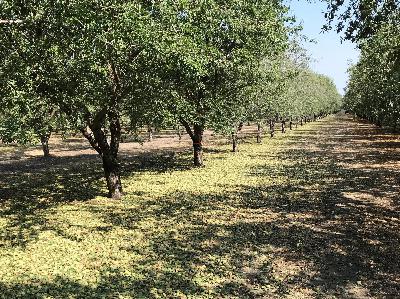
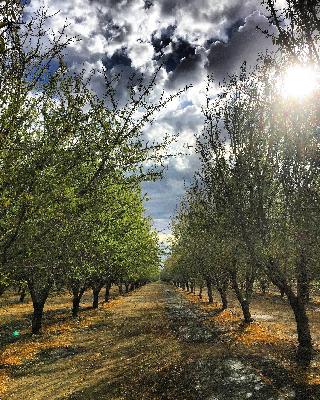
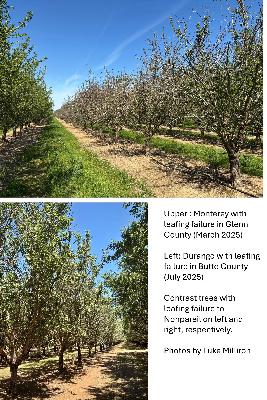
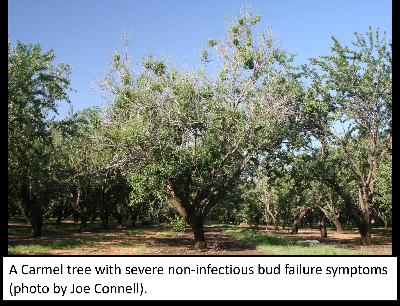


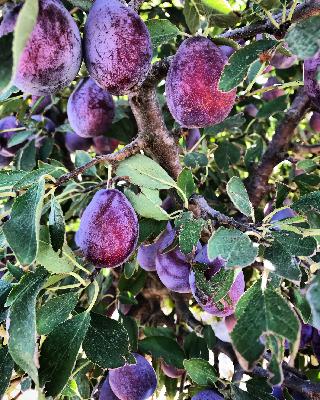
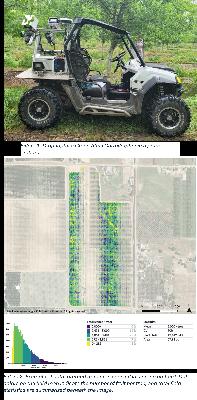
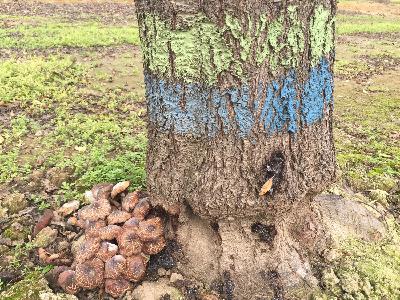


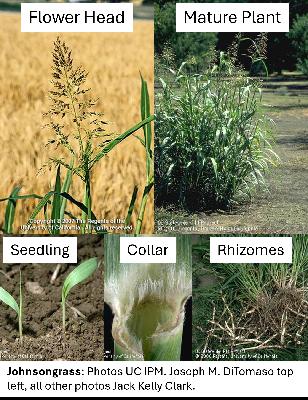
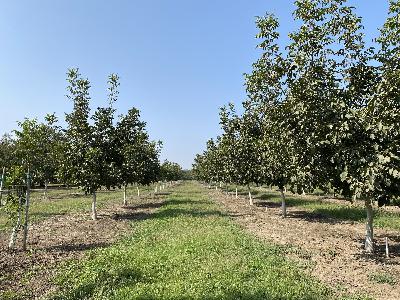
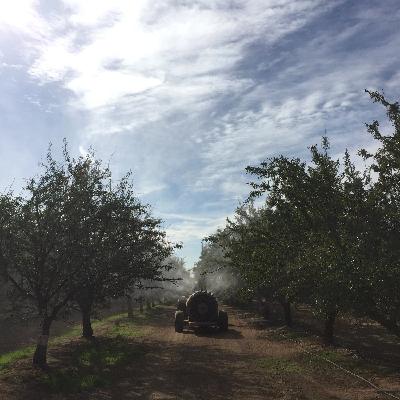
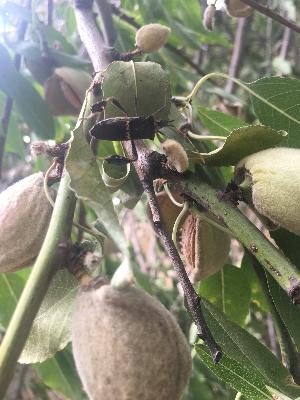
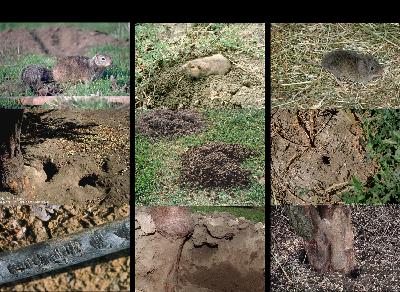
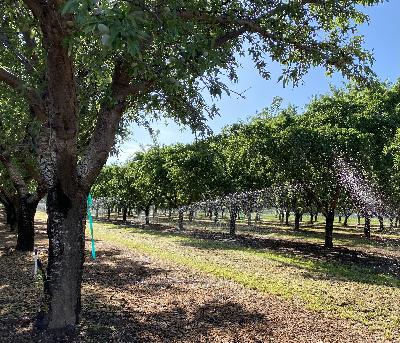



than you for very excellent podcast